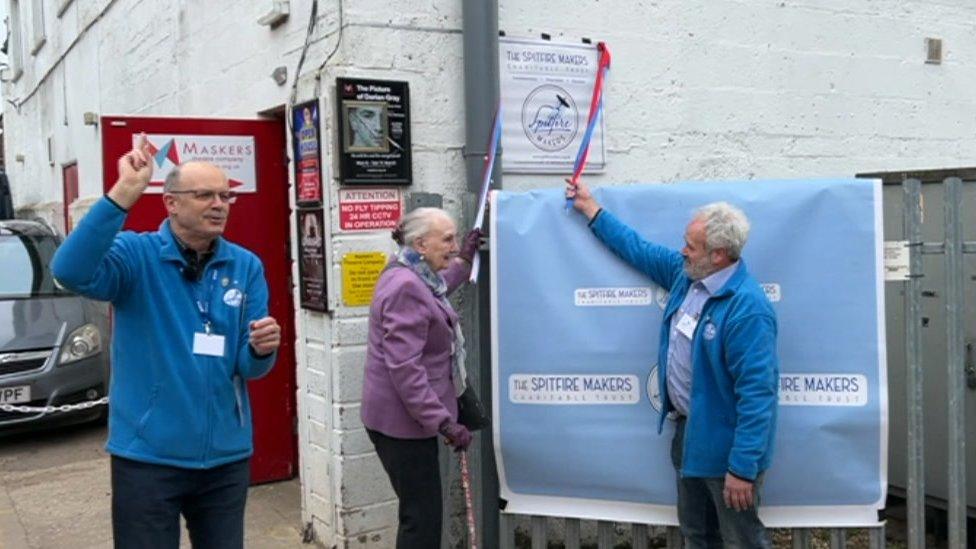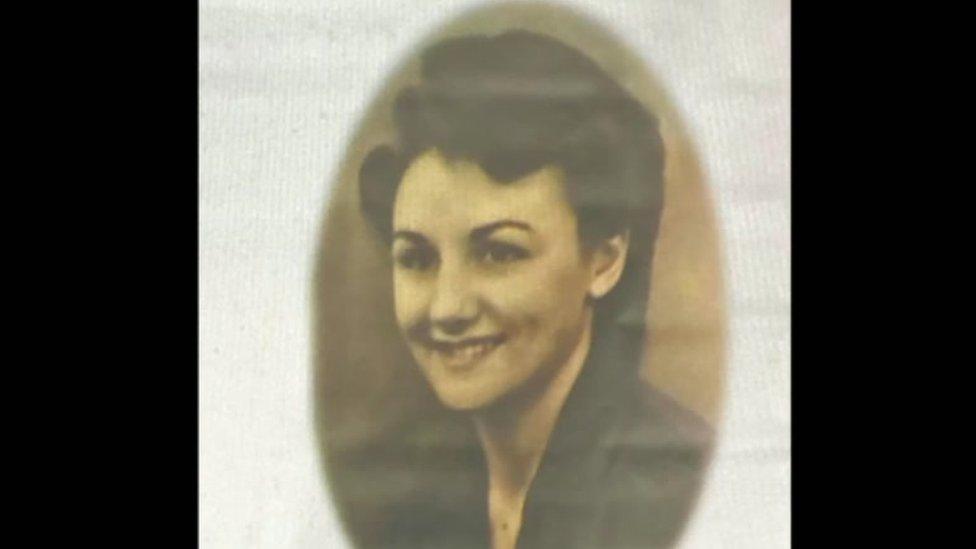Southampton Spitfire factory plaque unveiled by former worker
- Published
Vera Saxby unveils a plaque at a factory where she helped build parts for Spitfire during World War Two
A woman who helped build Spitfires during World War Two has unveiled a commemorative plaque at the factory where she used to work.
Vera Saxby was working for Auto Metalcraft in Southampton when the building, just off Shirley Road, was requisitioned by the government.
It was used to construct the iconic fighter planes' jettison fuel tanks.
A crowd cheered as the now 98-year-old returned to her former workplace to reveal the permanent tribute.

People gathered at the ceremony to mark the anniversary of the first Spitfire flight in 1936
On Sunday, a ceremony in Southampton marked the anniversary of the first Spitfire flight in 1936.
The plaque was unveiled at a building in Shirley, which was one of many secret locations across the city where the Supermarine aircraft was built during the war after the Woolston factory was bombed.
As part of the celebration, a Spitfire flew over the grave of its designer, Reginald (R. J.) Mitchell, who died before the plane entered production in Southampton.
The Spitfire Makers Charitable Trust, which ran the event, also created a trail that can be followed to see the locations of the shadow factories across Shirley.

The plaque said mainly women were employed by the factories to build the jettison fuel tanks
Today the building is occupied by the theatre group, Maskers Theatre Company.
Johnny Carrington, who is a member of the organisation, said the plaque is a "reminder of the heritage of the city".
He said: "This building was requisitioned by the Air Ministry and it became a place where drop tanks, jettison tanks were built for the Spitfire."

Ms Saxby said the factory had to solve the issue of fixing the fuel tanks to the aircraft without them falling off
Ms Saxby recalled making star plates for the jettison tank, and said: "It was fine before they filled it up and then it fell off."
"The fella I was working for knew that I sewed and he said, 'If you put a patch on something and it kept pulling off, What would you do?' and I said to zig zag it into the middle."

Follow BBC South on Facebook, external, Twitter, external, or Instagram, external. Send your story ideas to south.newsonline@bbc.co.uk, external.
Related topics
- Published5 March 2023

- Published9 March 2022

- Published5 March 2016

- Published5 March 2016
